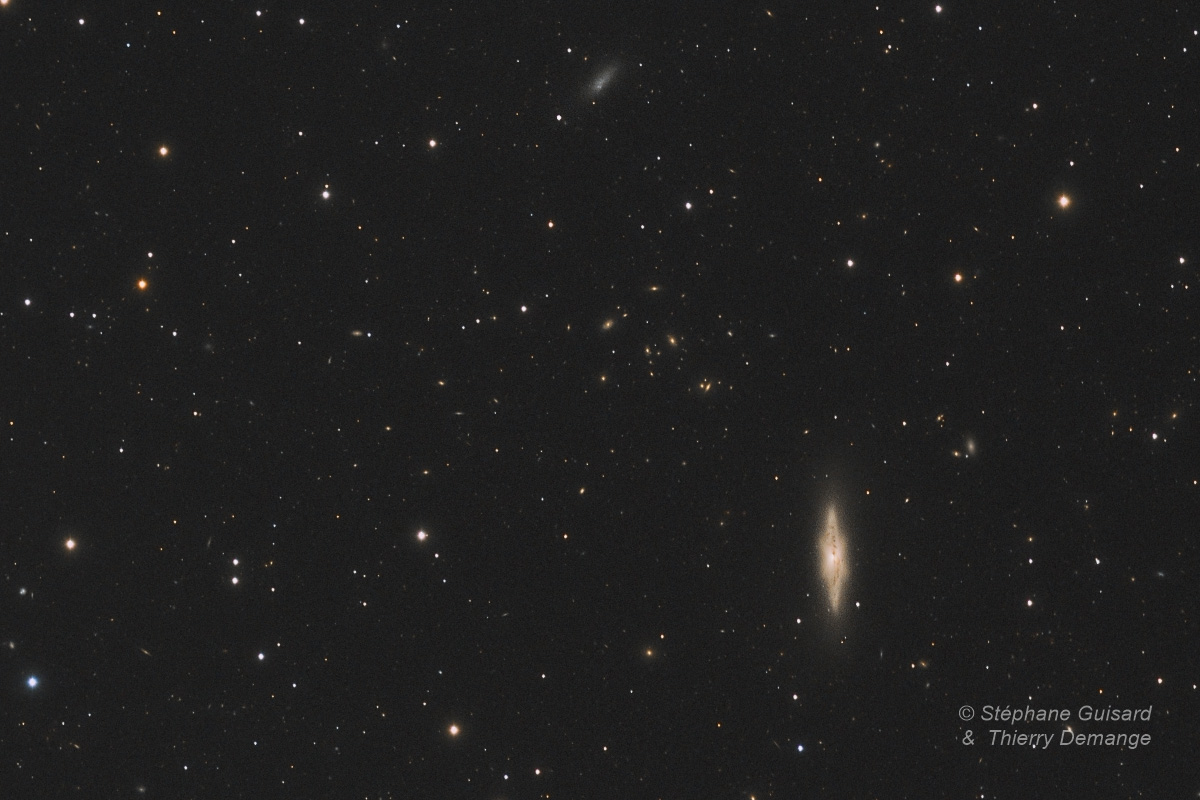HOME
Messier 49 Galaxy
From the Atacama desert with a small telescope.
© Stéphane Guisard,
Los Cielos de América
& Thierry Demange,
CapNature
Messier 49 (also known as M49 or NGC 4472) is an elliptical galaxy located about 49 million light-years away in the equatorial constellation of Virgo. This galaxy was discovered by French astronomer Charles Messier on February 19, 1771.
As an elliptical galaxy, Messier 49 has the physical form of a radio galaxy, but it only has the radio emission of a normal galaxy. The nucleus of this galaxy is emitting X-rays, suggests the likely presence of a supermassive black hole with an estimated mass of 565 million times the mass of the Sun. X-ray emissions shows a structure to the north of Messier 49 that resembles a bow shock. To the southwest of the core, the luminous outline of the galaxy can be traced out to a distance of 860000 light-years.
This galaxy has a large collection of globular clusters, estimated at about 5,900. However, this count is far exceeded by the 13,450 globular clusters orbiting the supergiant elliptical galaxy Messier 87. On average, the globular clusters of M 49 are about 10 billion years old.
Messier 49 was the first member of the Virgo Cluster of galaxies to be discovered. It is the most luminous member of that cluster and more luminous than any galaxy closer to the Earth. This galaxy forms part of the smaller Virgo B subcluster located 4.5° away from the dynamic center of the Virgo Cluster, centered on Messier 87.
The picture shown here was taken from the Atacama desert in Chile with a small (150mm diameter) refractor telescope (Takahashi TOA150) and a SBIG ST11000 CCD camera mounted on an Astelco NTM500 equatorial mount. Total exposure time is 6h20 minutes through Luminance, Red, Green and Blue filters. Image acquisition and pre-processing by Stéphane, color processing by Thierry.
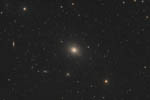
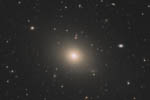
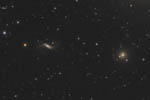

M49 Galaxy, full field image.
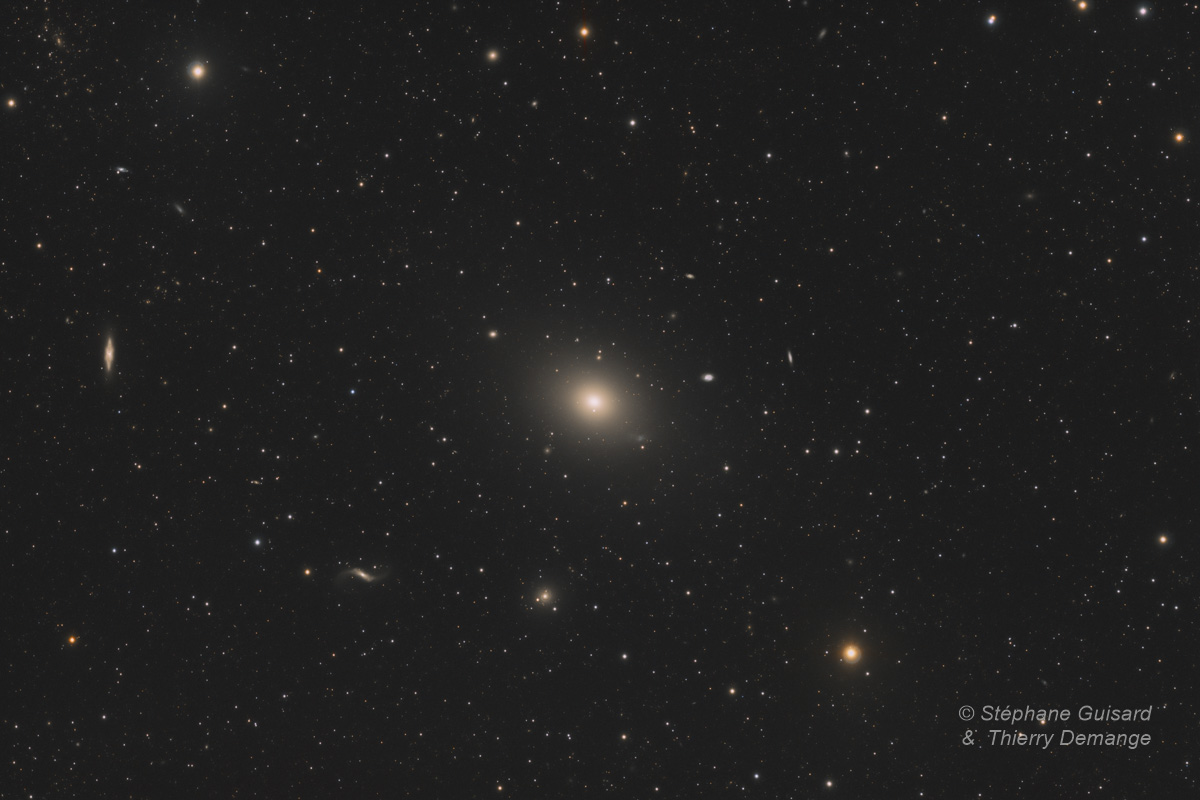
M49 Galaxy, full resolution image crop.
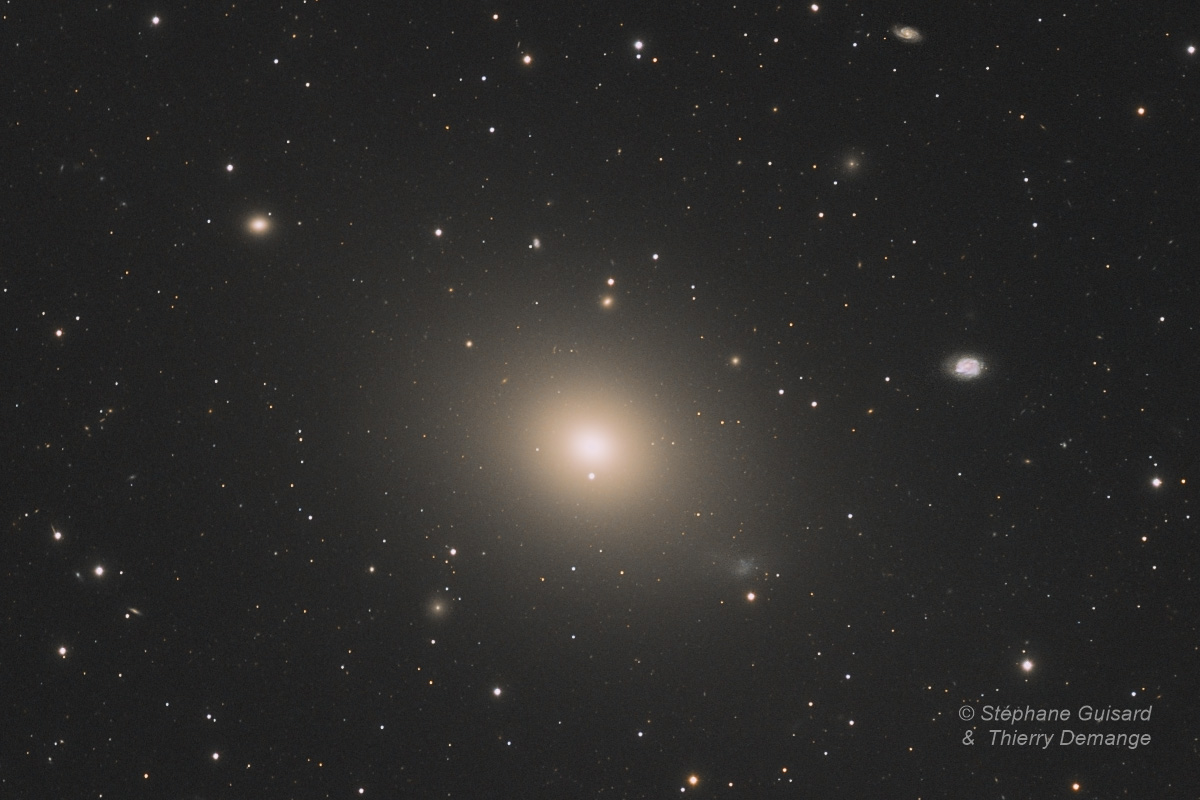
Small galaxies in the M49 region, full resolution image crop.
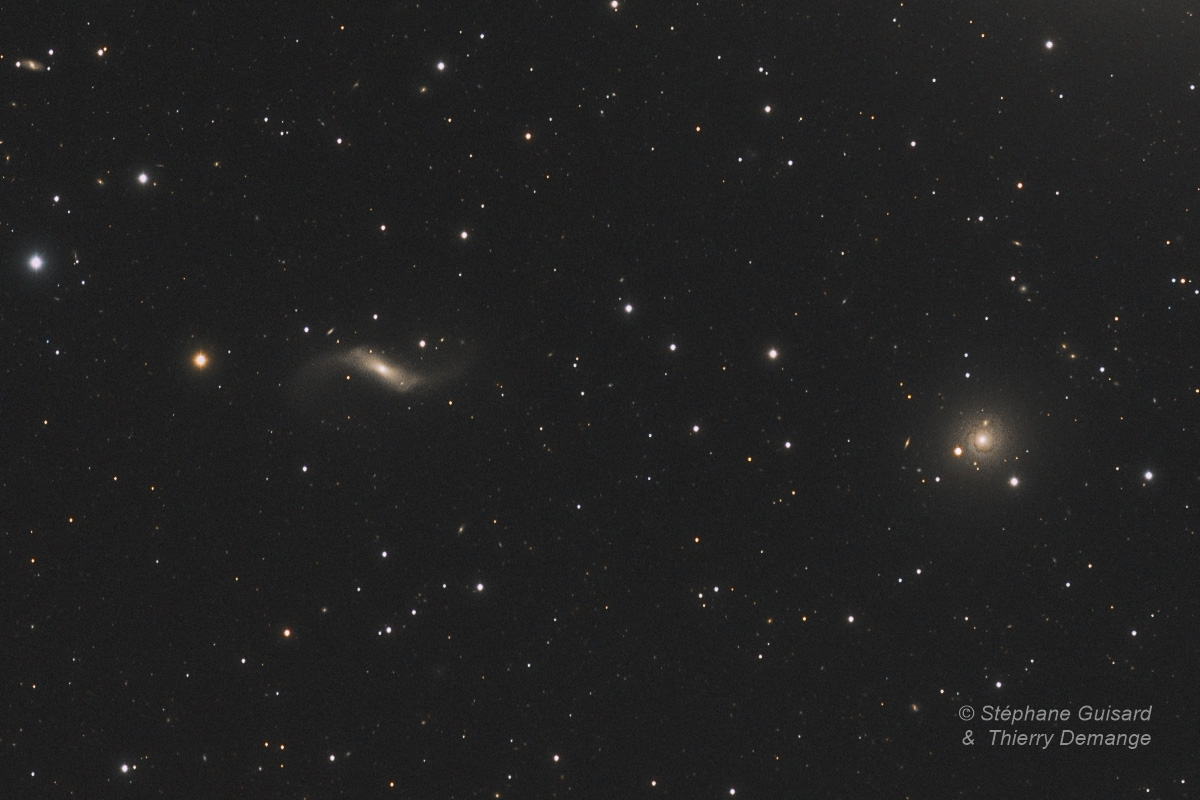
Small galaxies in the M49 region, full resolution image crop.
